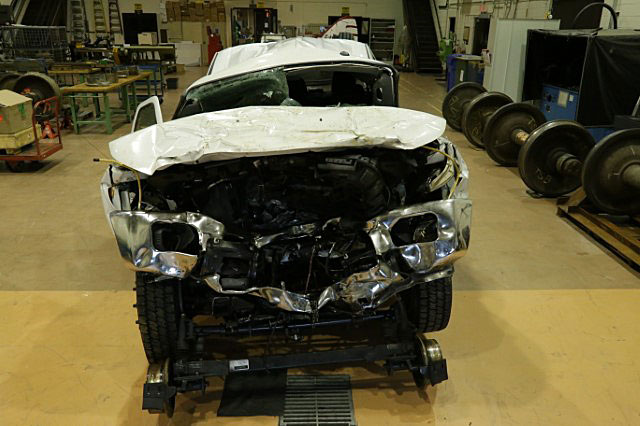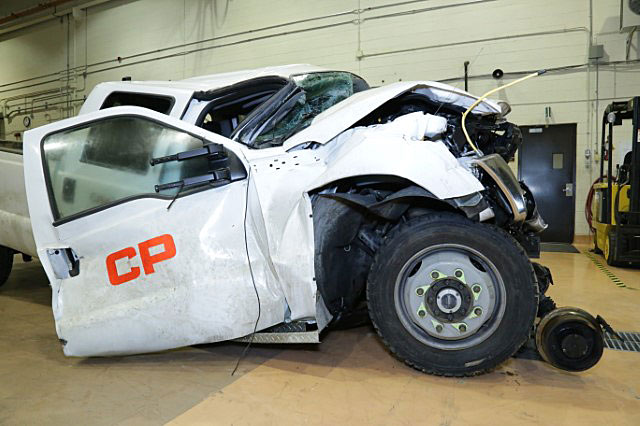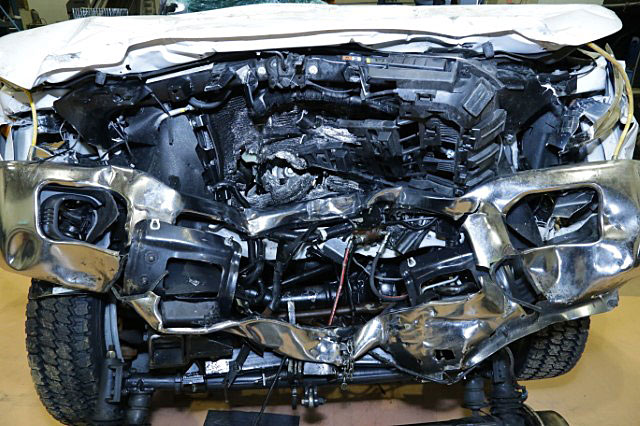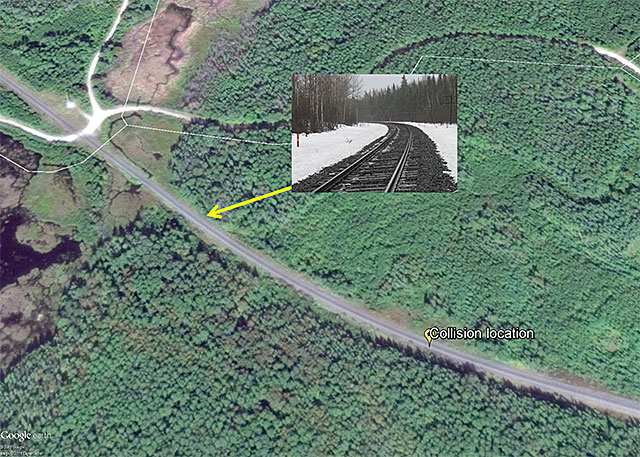Collision between train and track unit
Canadian Pacific Railway
Freight train 100-03
Hi-rail vehicle 53705
Mile 118.36, Nemegos Subdivision
Nemegos, Ontario
The occurrence
On , at approximately 1540 Eastern Standard Time, Canadian Pacific Railway freight train 100-03 was proceeding eastward at about 35 mph when it collided with a stationary hi-rail vehicle at Mile 118.36. The foreman and machine operator had exited the hi-rail vehicle just before the collision. There were no injuries and there was no derailment. The hi-rail vehicle was destroyed. The lead locomotive of train 100-03 sustained minor damage.
Media materials
News release
Breakdown of several safety defences led to March 2016 collision between CP freight train and hi-rail vehicle near Chapleau, Ontario
Read the news release
Deployment notice
TSB deploys a team of investigators to a railway collision near Chapleau, Ontario
The Transportation Safety Board of Canada (TSB) is deploying a team of investigators to a head-on collision involving a Canadian Pacific (CP) Hi-rail track unit and a CP train near Chapleau, Ontario. The TSB will be conducting an investigation.
Investigation information
Download high-resolution photos from the TSB Flickr page.
Class of investigation
This is a class 3 investigation. These investigations analyze a small number of safety issues, and may result in recommendations. Class 3 investigations are generally completed within 450 days. For more information, see the Policy on Occurrence Classification.
TSB investigation process
There are 3 phases to a TSB investigation
- Field phase: a team of investigators examines the occurrence site and wreckage, interviews witnesses and collects pertinent information.
- Examination and analysis phase: the TSB reviews pertinent records, tests components of the wreckage in the lab, determines the sequence of events and identifies safety deficiencies. When safety deficiencies are suspected or confirmed, the TSB advises the appropriate authority without waiting until publication of the final report.
- Report phase: a confidential draft report is approved by the Board and sent to persons and corporations who are directly concerned by the report. They then have the opportunity to dispute or correct information they believe to be incorrect. The Board considers all representations before approving the final report, which is subsequently released to the public.
For more information, see our Investigation process page.
The TSB is an independent agency that investigates air, marine, pipeline, and rail transportation occurrences. Its sole aim is the advancement of transportation safety. It is not the function of the Board to assign fault or determine civil or criminal liability.



